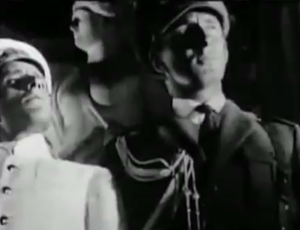As I popped on the television last night after uni, flicking through the channels I noticed that ‘Popasia’ was on SBS2, a show I have never watched before but have particular interest in at the moment as I am planning to head to Japan (and hopefully Korea) at the end of the year. The program is principally a music video show, something like ‘The Loop’ or ‘Video Hits’, but consists only of pop music hits from, you guessed it, Asia.
I absolutely loved it…even if half of the joy came from laughing at the pop stars.
There was something nostalgic about the way the videos were put together, most involving highly choreographed dance numbers set in studio spaces framed by ‘funky’ camera angles – very similar to ’90s videos like ATC’s ‘All Around the World’ or TLC’s ‘No Scrubs’. In addition, almost all of the videos were from boy bands (think Asian versions of One Direction or Back Street Boys) or girl groups reminiscent of Destiny’s Child or today’s Little Mix, take 4Minutes’ video clip ‘I Me My Mine’ for instance.
However, there were some stark cultural differences evident in the videos. For one, the fashion is completely different; although their clothes have been obviously westernised, there is still something distinctly ‘Asian’ about what they wear and how they wear it. Their hair cuts and colours seem over the top by western standards, but appear to be the norm over there… at least for ‘k-pop’ or ‘j-pop’ music artists like SHINee (particularly in their video clip for ‘Lucky Star’). One other thing that seems unique to Asian pop songs is the frequent use of the English language in their lyrics. This was something I was faintly aware of from songs like ‘Gangnam Style’, that interrupts Korean lyrics with phrases like ‘sexy lady’ and ‘baby baby’. I find this rather peculiar because western artists would rarely sing a few lines of their song in another language.
All in all, watching the program made me realise 1. How big of an impact Western culture has had on the rest of the world in regards to music, and 2. How closed off we are to music that is sung in languages other than English, when it seems that the whole world is able to easily access popular western songs.
My personal favourite from the show was this track by GOT7… keep a listen out for the golden English lyrics!

